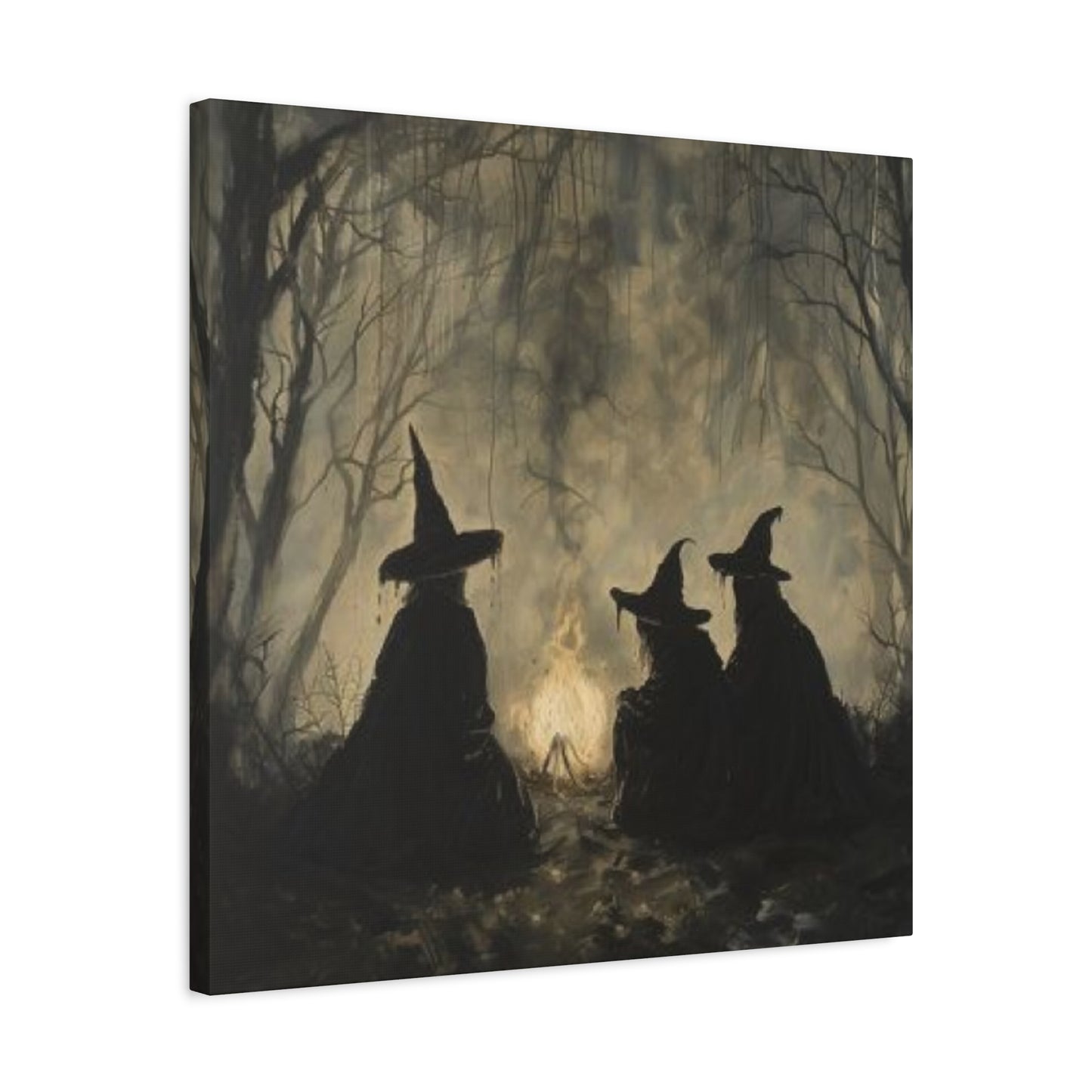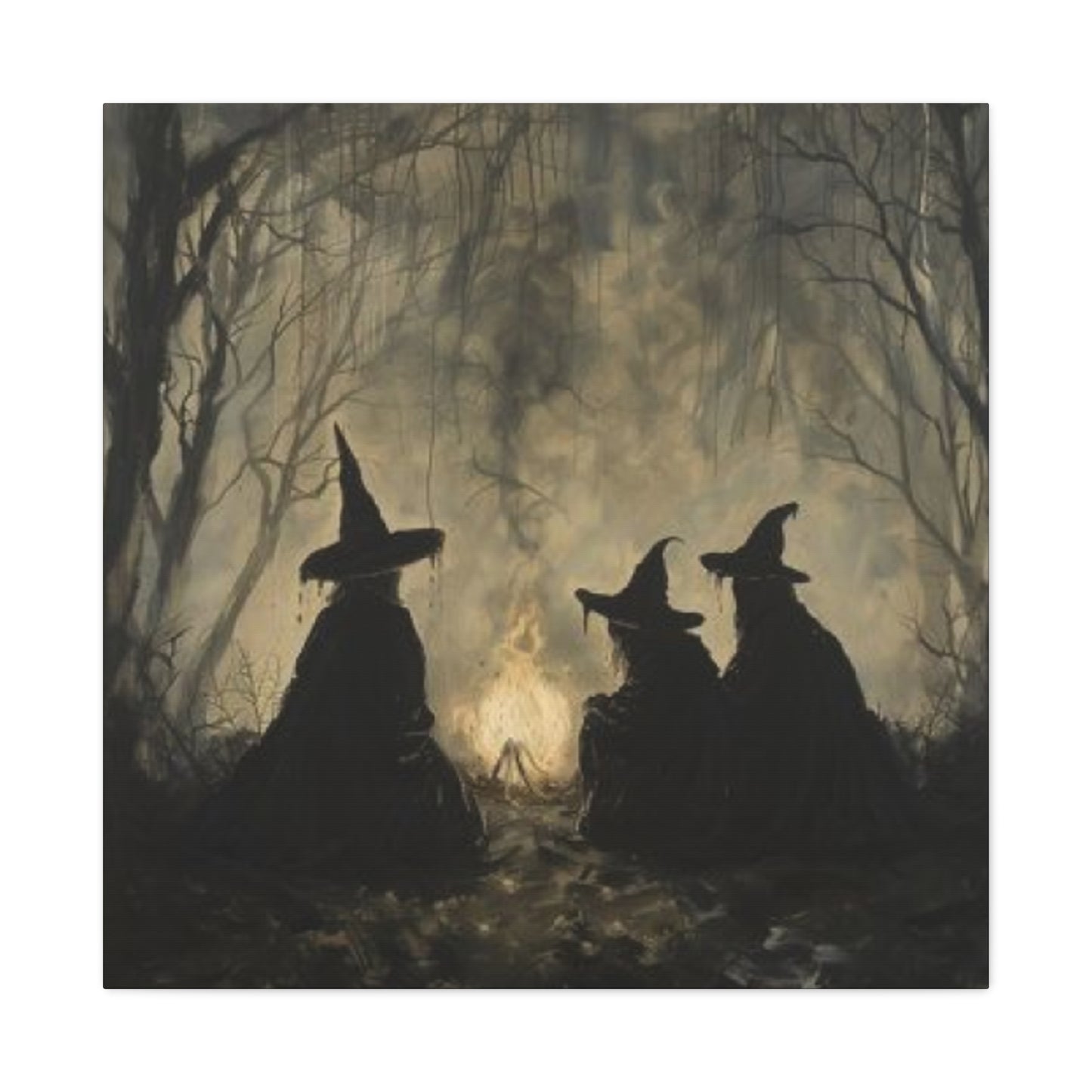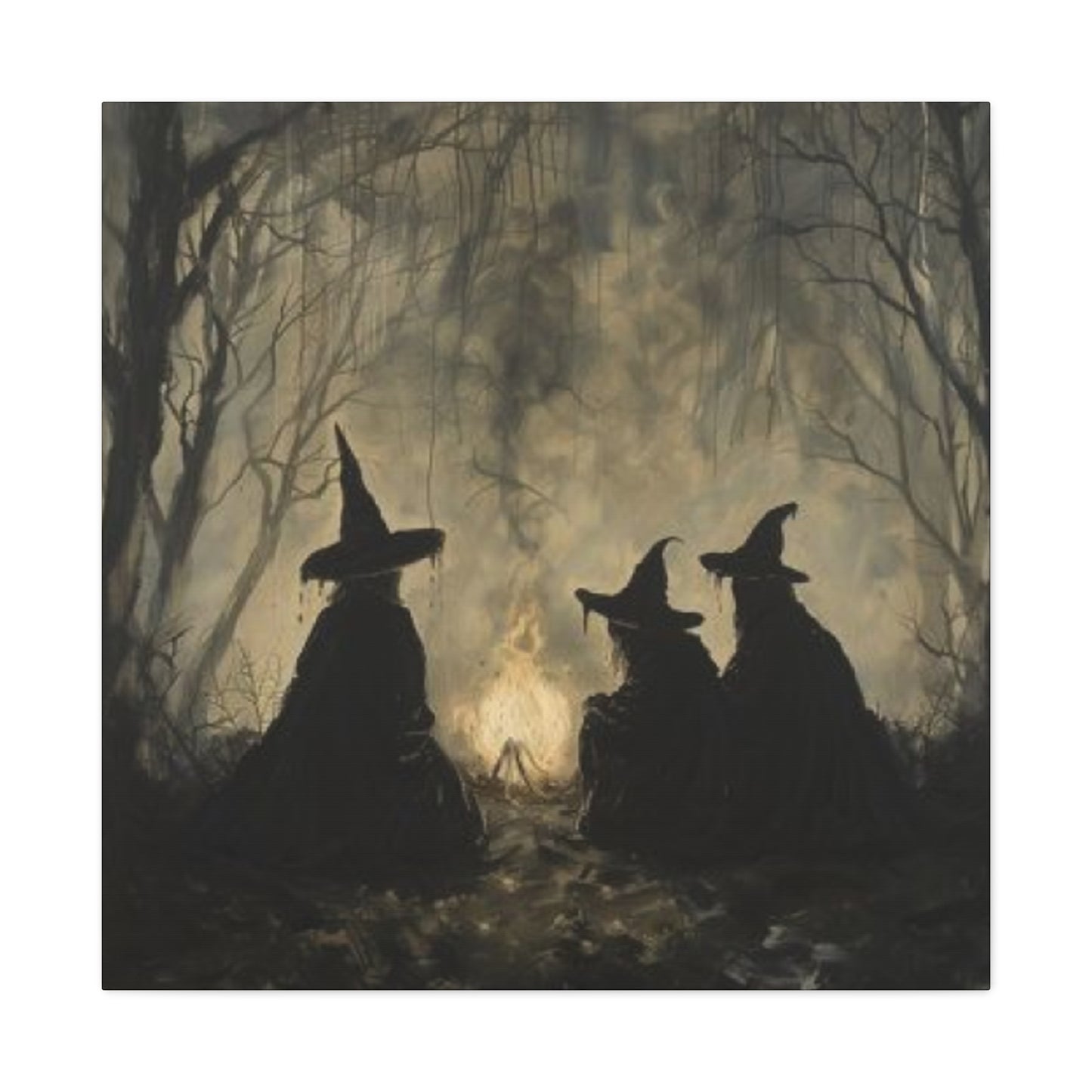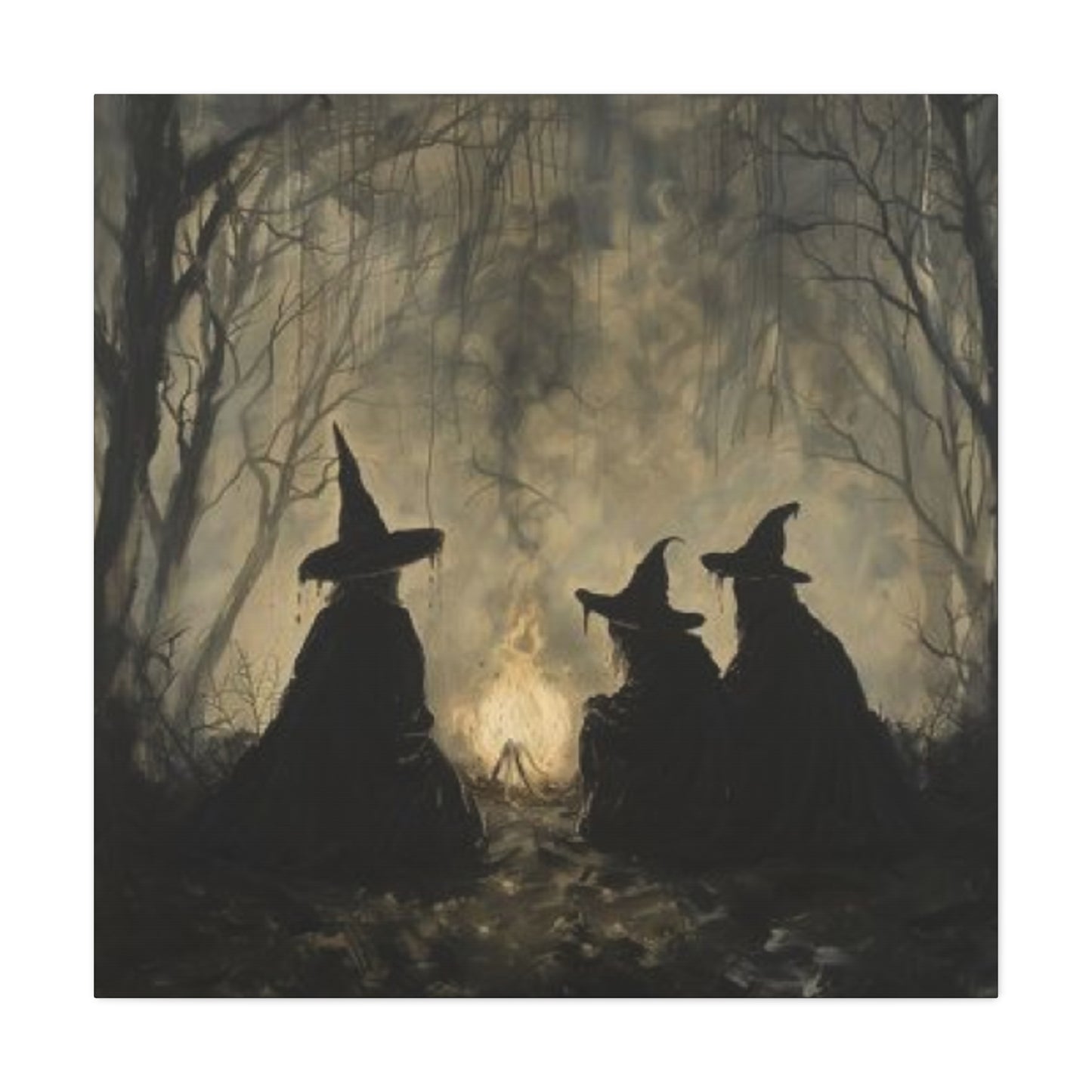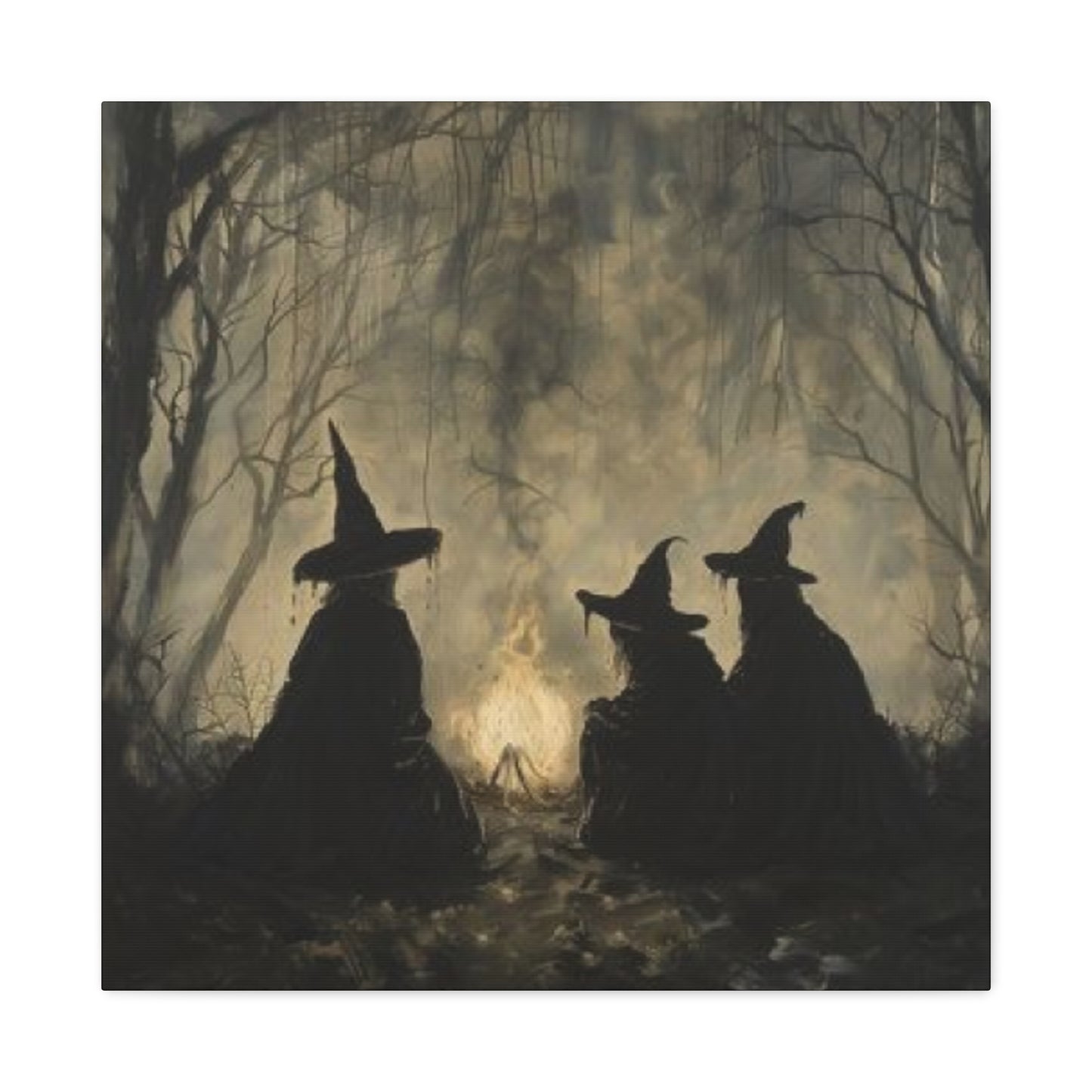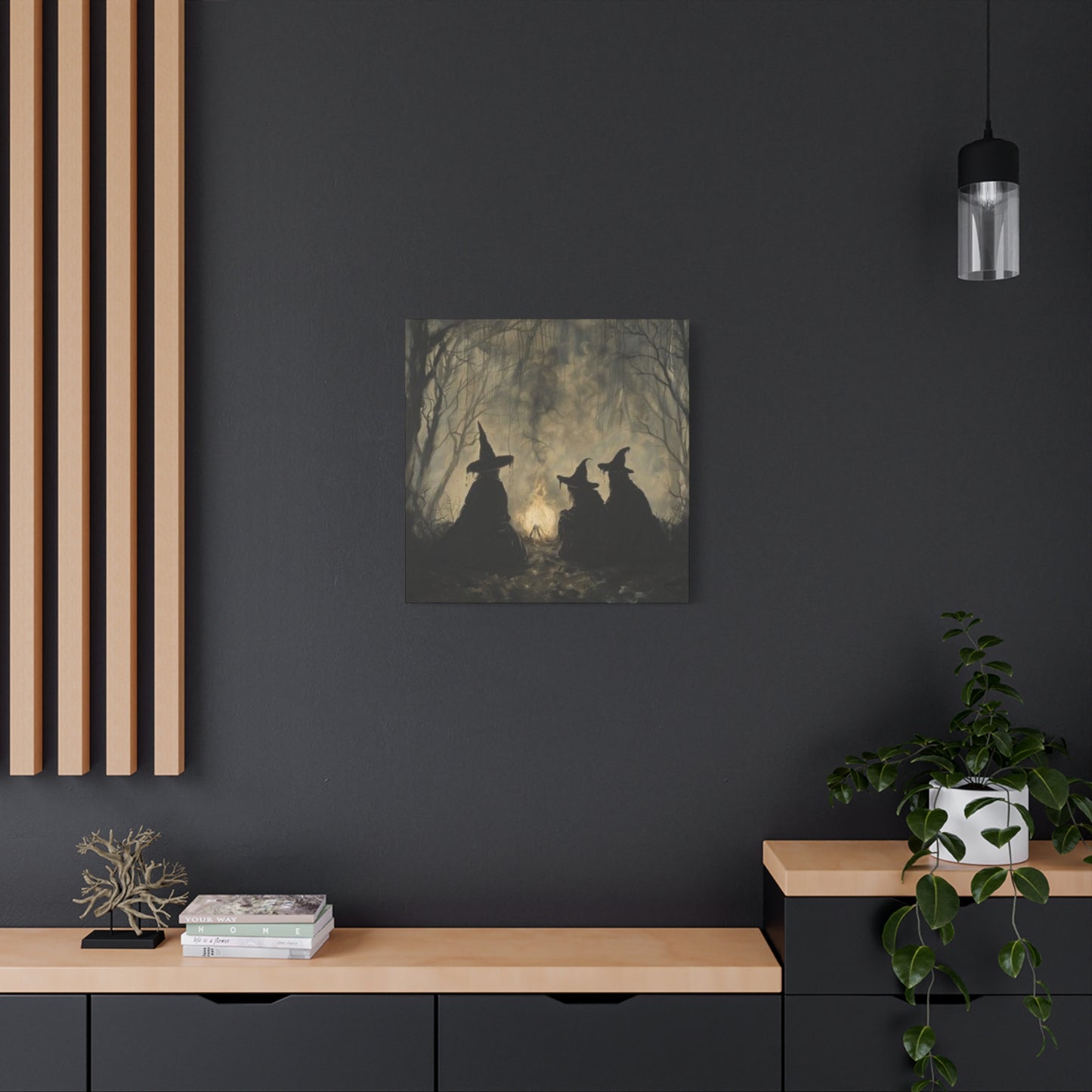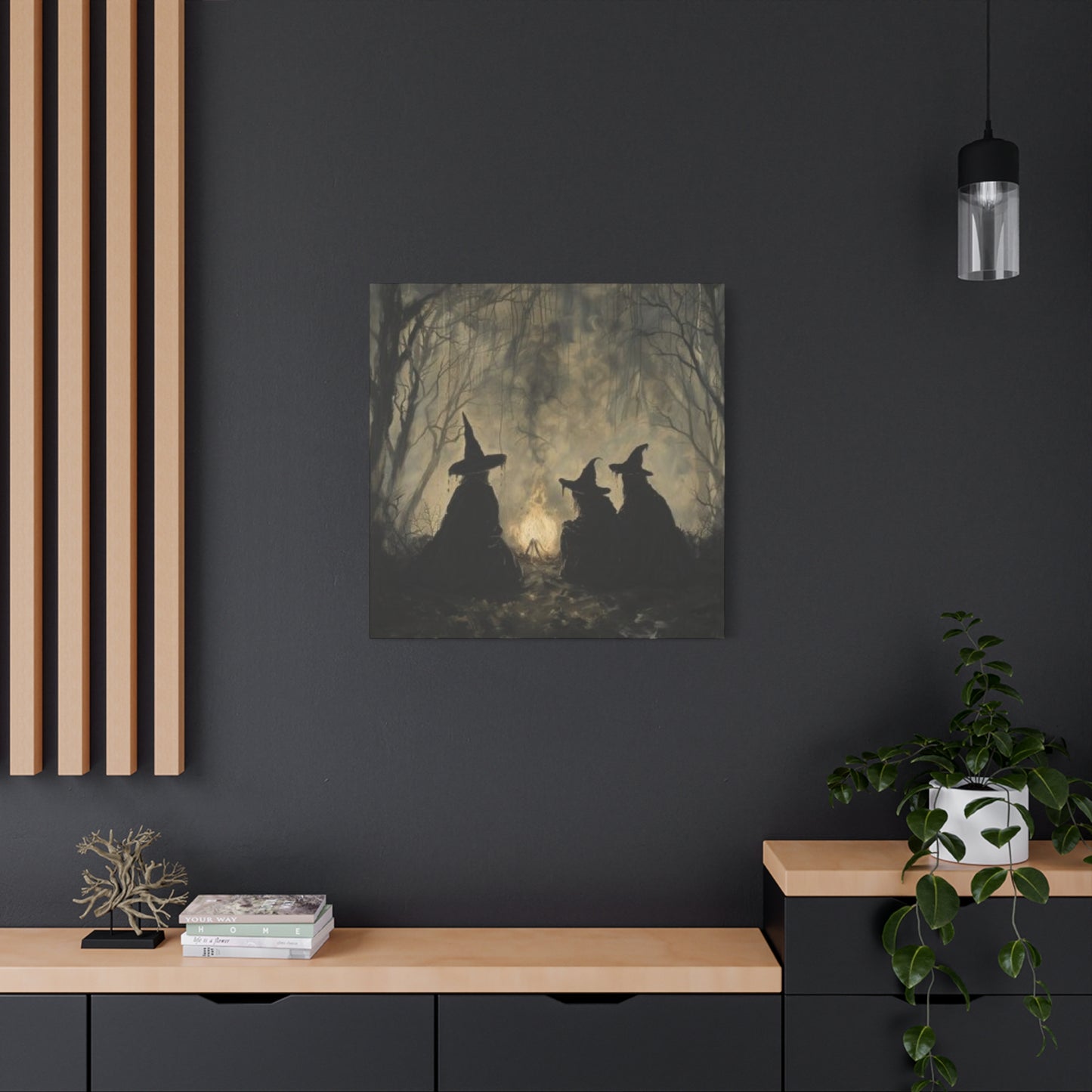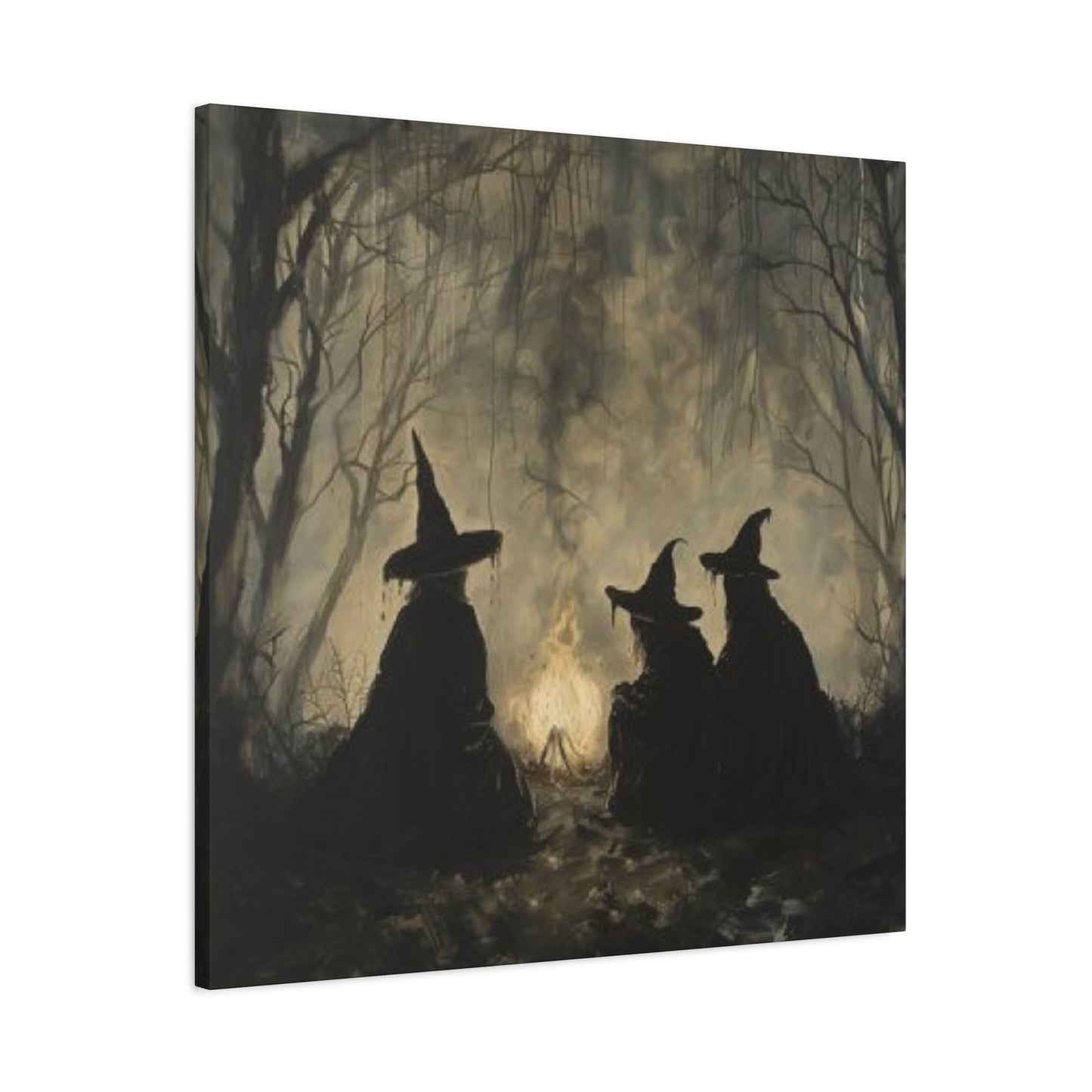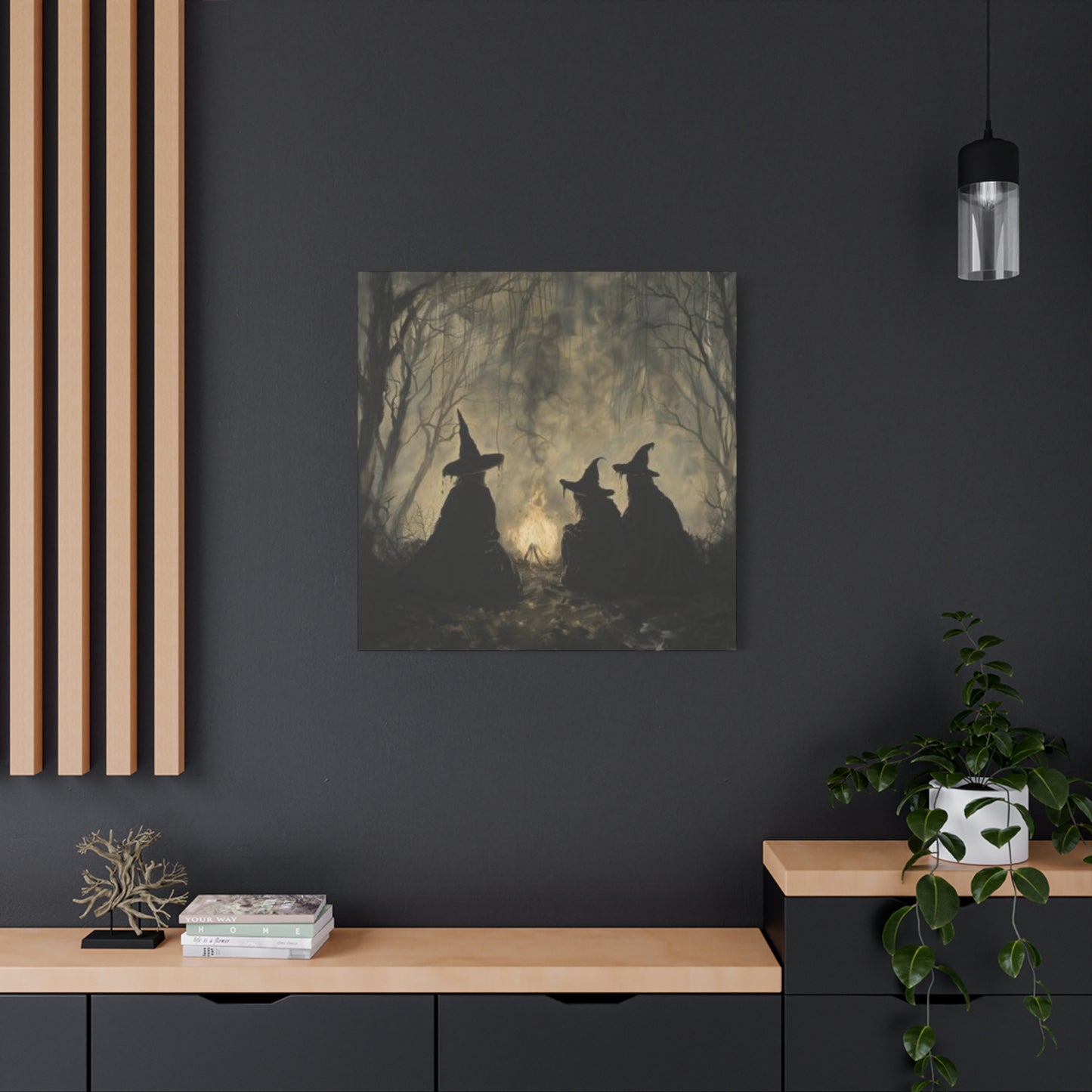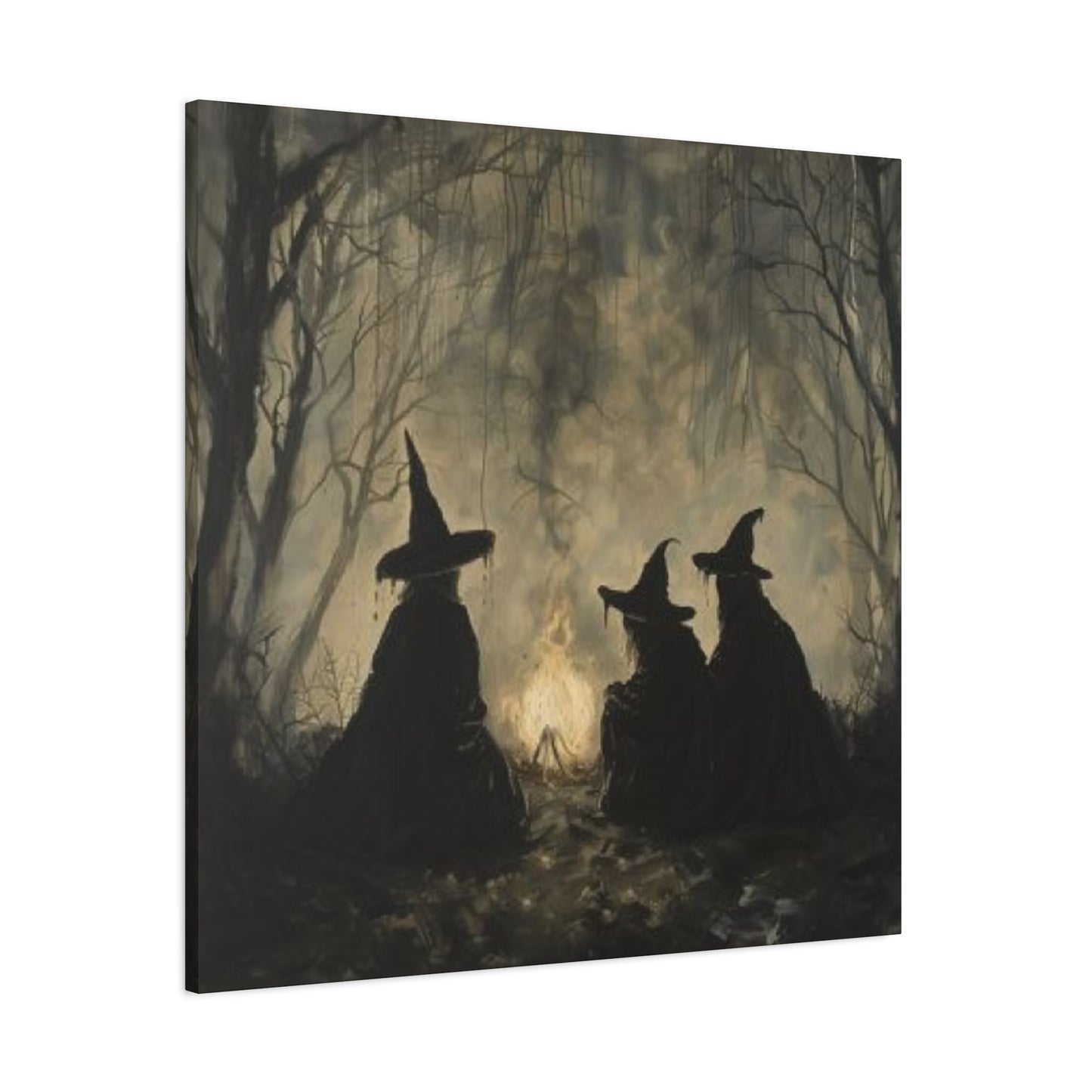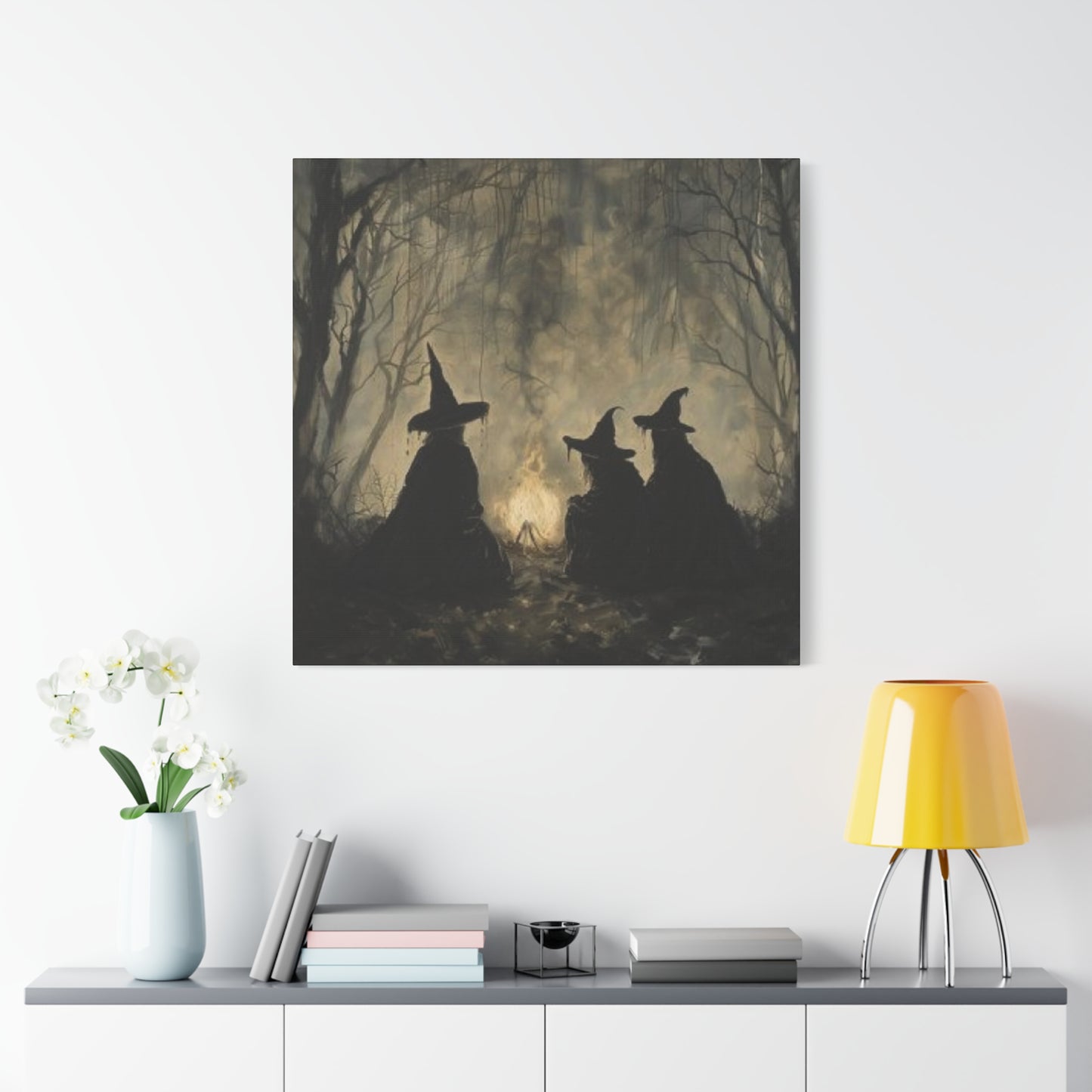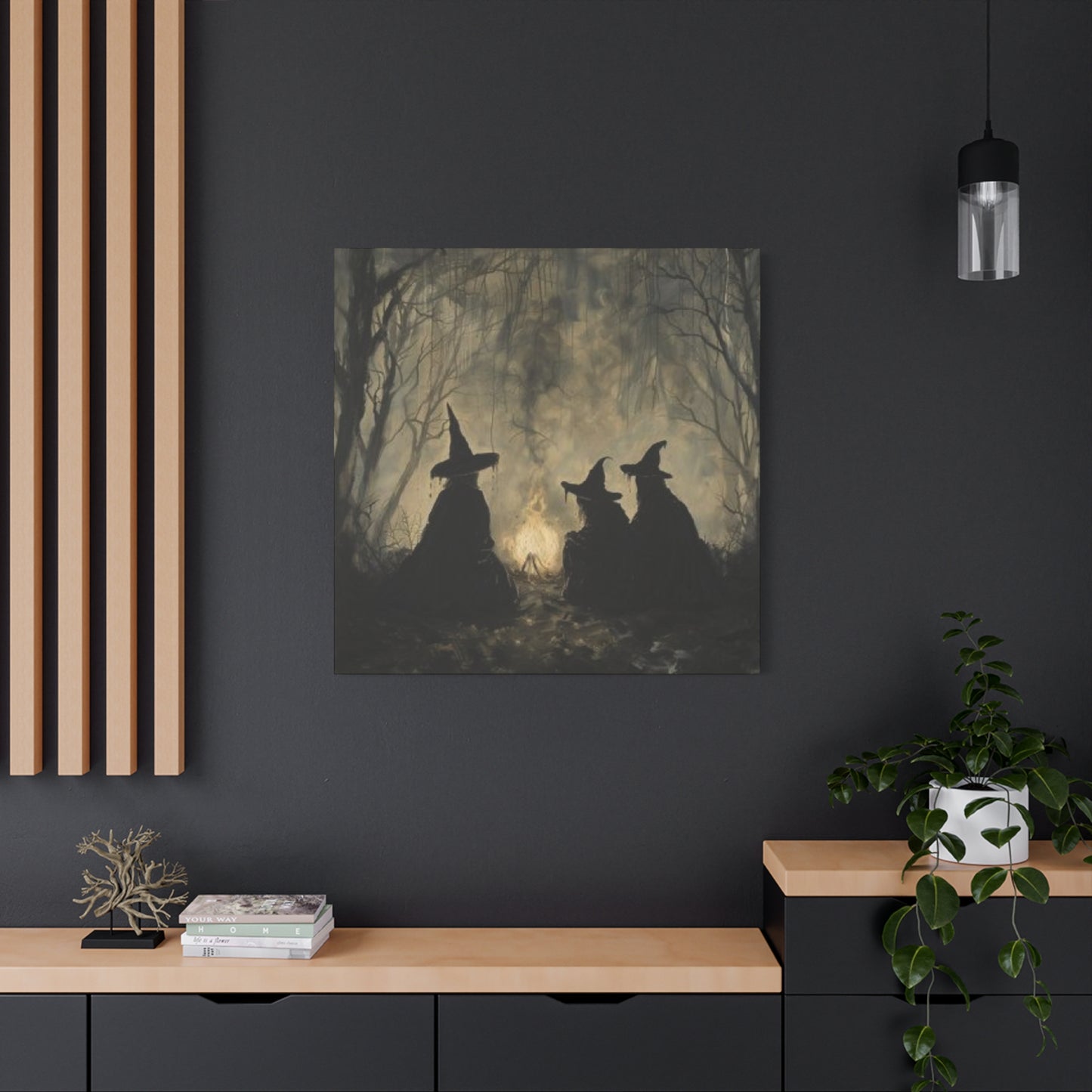Enchanting Witches Sitting Wall Art: A Complete Guide to Magical Home Aesthetics
The allure of mystical imagery has captivated human imagination for centuries, and few subjects embody this fascination quite like witches in their most contemplative poses. The visual representation of witches seated in various settings offers a unique blend of mysticism, folklore, and artistic expression that resonates deeply with modern sensibilities. This comprehensive exploration delves into the multifaceted world of witches sitting artwork, examining how these enchanting pieces can transform living environments while celebrating themes of feminine power, nature, and the supernatural.
Contemporary culture has witnessed a remarkable resurgence in the appreciation of witch-themed aesthetics, moving far beyond the stereotypical Halloween caricatures of the past. Today's artistic interpretations present witches as complex figures embodying wisdom, independence, and connection to natural forces. The imagery of witches in seated positions particularly emphasizes contemplation, ritual, and the quiet power of stillness, creating visual narratives that invite viewers into moments of magical introspection.
The appeal of these artistic representations extends across multiple decorating styles and personal aesthetics. Whether rendered in dramatic gothic tones, gentle vintage palettes, or stark minimalist silhouettes, witches sitting artwork offers versatile visual elements that can complement diverse home environments. From cozy reading nooks to sophisticated galleries, these pieces serve as conversation starters and focal points that reflect the owner's appreciation for the mystical and unconventional.
This guide examines eighteen distinct approaches to witches sitting artwork, exploring how each style can enhance your living environment while providing practical advice on selection, placement, and integration. Whether you're drawn to the dramatic intensity of gothic representations or the subtle charm of minimalist interpretations, you'll discover how these magical pieces can create atmospheres that are simultaneously inviting and intriguing.
Mysterious Charm of Witches Sitting Art
The fundamental appeal of witches in seated positions lies in their mysterious quality, a visual language that speaks to hidden knowledge and ancient wisdom. These artistic compositions typically depict solitary figures engaged in quiet activities like reading spell books, gazing into crystal balls, or simply resting in contemplative silence. The seated posture itself carries significant symbolic weight, suggesting both accessibility and authority, making these figures appear simultaneously approachable and commanding.
Artists working in this genre often emphasize the enigmatic nature of their subjects through careful attention to facial expressions, body language, and surrounding elements. A witch seated with her head slightly bowed over an ancient tome conveys scholarly dedication and the pursuit of arcane knowledge. Meanwhile, a figure seated upright with eyes closed might suggest meditation or communion with unseen forces. These subtle variations in posture and expression create distinct emotional tones that resonate differently with various viewers.
The mysterious charm of these artworks is frequently enhanced through strategic use of lighting and shadow. Many pieces feature dramatically lit scenes where candlelight, moonbeams, or mystical glows illuminate the central figure while allowing shadows to cloak surrounding details. This interplay of light and darkness mirrors the witch archetype itself, representing the balance between revealed and hidden truths, known and unknown realms.
Color palettes in mysteriously charming witch artwork often lean toward rich, deep tones that evoke nighttime settings and secret chambers. Deep purples, midnight blues, forest greens, and charcoal blacks dominate these compositions, occasionally punctuated by the warm glow of candlelight or the cool silver of moonlight. These color choices create atmospheres of intimacy and secrecy, drawing viewers into private moments of magical practice.
The composition of mysterious witch artwork frequently incorporates symbolic elements that enhance the enigmatic quality. Surrounding objects like dusty books, glass bottles filled with unknown substances, dried herbs hanging from rafters, or ancient scrolls all contribute to the narrative of hidden knowledge and secret practices. Each element invites speculation and storytelling, encouraging viewers to imagine the witch's history, her studies, and her magical pursuits.
When selecting mysterious witches sitting artwork for your home, consider pieces that leave room for interpretation rather than spelling out every detail. The most compelling mysterious artwork maintains a balance between showing and concealing, providing enough visual information to establish mood and character while leaving sufficient ambiguity to spark imagination. Look for pieces where the witch's expression suggests inner thoughts rather than obvious emotions, creating an ongoing dialogue between the artwork and the viewer.
Placement of mysteriously charming witch artwork works exceptionally well in private retreats like bedrooms, studies, or reading nooks where the contemplative quality of the imagery complements the room's function. These pieces also excel in entryways or hallways where they create immediate atmospheric impact for guests. The key is positioning them where viewers have time to pause and engage with the details rather than spaces where people rush through quickly.
The mysterious charm aesthetic particularly appeals to those who appreciate subtlety and nuance in their decorating choices. Rather than making bold, obvious statements, these pieces work through suggestion and atmosphere, gradually revealing their depth through repeated viewings. This quality makes them excellent long-term investments in home aesthetics, as they continue to reward attention without becoming visually tiresome.
Gothic Sensibilities with Witchy Prints
Gothic aesthetics and witch imagery form a natural partnership, both drawing from similar wells of romanticism, darkness, and the sublime. Gothic-inspired witch prints emphasize dramatic contrasts, ornate details, and an overall sense of beautiful darkness that has captivated audiences since the Victorian era. These pieces often incorporate architectural elements like pointed arches, stone walls, and elaborate ironwork that situate the witch within distinctly gothic environments.
The gothic approach to depicting seated witches frequently emphasizes their connection to death, decay, and the passage of time. Unlike more whimsical interpretations, gothic witch artwork often includes memento mori elements like skulls, wilting flowers, or crumbling stonework that remind viewers of mortality and transformation. The witch herself might be rendered with pale skin, dark flowing garments, and an aura of melancholy that speaks to Victorian notions of the beautiful and the macabre.
Color schemes in gothic witch prints typically revolve around blacks, deep reds, silvery grays, and occasional touches of gold or purple. These palettes create high-contrast compositions that immediately draw the eye while maintaining the somber, serious tone characteristic of gothic aesthetics. The use of rich blacks isn't just about darkness but about creating depth and weight, giving the artwork a substantial, almost three-dimensional quality.
Gothic witch imagery often incorporates elaborate costume details that reflect Victorian and medieval influences. Long flowing dresses with intricate lace, velvet cloaks, ornate jewelry, and elaborate headpieces transform the witch into a figure of gothic romance. These costume elements serve dual purposes, beautifying the figure while also emphasizing her otherness and connection to historical periods often associated with witch hunts and persecution.
The settings depicted in gothic witch prints frequently feature ruins, ancient libraries, stone cottages, or shadowy forests that evoke both romanticism and isolation. A witch seated among crumbling castle walls or in a tower room overlooking a moonlit landscape creates powerful visual narratives about solitude, preservation of ancient knowledge, and resistance to the passage of time. These environmental elements ground the witch in specific atmospheric contexts that enhance the overall gothic mood.
When incorporating gothic witch prints into your home, consider the existing architectural elements and decorating style. Gothic artwork naturally complements homes with Victorian details, exposed brick, dark woodwork, or industrial elements. However, these prints can also create striking contrasts in more modern environments, where their dramatic darkness provides a powerful counterpoint to minimalist contemporary design.
The placement of gothic witch artwork benefits from thoughtful consideration of surrounding elements. These pieces often work best as focal points rather than part of gallery walls, where their dramatic intensity might compete with neighboring artwork. Consider positioning gothic prints against dark painted walls where they can maintain their moody atmosphere, or conversely, against light walls where the contrast enhances their visual impact.
Gothic witch prints appeal particularly to those who appreciate the intersection of beauty and darkness, romance and mortality. These pieces make bold statements about the owner's aesthetic preferences and willingness to embrace unconventional beauty. They work exceptionally well in libraries, dining rooms, or bedrooms where their dramatic presence can set a distinctive atmospheric tone without overwhelming daily functionality.
Witches on Broomsticks: Seated Stillness
The traditional image of witches flying on broomsticks has been reinterpreted in contemporary artwork to explore moments of stillness and contemplation. Rather than depicting witches in mid-flight, these pieces show them seated upon their broomsticks in moments of rest, creating interesting tensions between the dynamic potential of flight and the peaceful reality of stillness. This artistic choice transforms the broomstick from a simple vehicle into a throne or perch, emphasizing the witch's command over her magical tools.
Artworks featuring witches seated on broomsticks often explore the relationship between the witch and her most iconic magical implement. The broomstick might be positioned horizontally as a seat, with the witch perched sideways in a casual pose that suggests comfort and familiarity. Alternatively, the witch might sit straddling the broomstick in a ready position, suggesting imminent flight or a brief pause during a longer journey. These compositional choices create different narratives and emotional tones.
The stillness emphasized in these artworks creates contemplative qualities that invite viewers to consider what the witch might be thinking or observing during her pause. Is she surveying the landscape below, plotting her next destination, or simply enjoying a moment of quiet amid her travels? This ambiguity allows viewers to project their own narratives onto the scene, creating personal connections with the artwork.
Settings for witches seated on broomsticks vary widely, from earthbound scenes in gardens or clearings to elevated positions atop towers or tree branches. Some artists depict witches hovering motionless in mid-air, seated on their broomsticks as if they were floating chairs, creating surreal images that challenge physical expectations. Others show witches grounded but mounted, ready to launch skyward at any moment, capturing the tension between earth and air, stillness and motion.
The technical challenge of depicting a seated figure on a narrow broomstick often leads artists to creative solutions that enhance the magical quality of the scene. Some render the broomstick with exaggerated thickness or stability, making it more plausible as a seat. Others embrace the improbability, showing witches balanced impossibly or supported by visible magical forces. These artistic choices contribute to the overall sense of magic and impossibility.
Color palettes for broomstick-seated witch artwork often incorporate sky tones like deep blues, sunset oranges and purples, or nighttime blacks studded with stars. Even when the witch is depicted on the ground, these aerial color associations emphasize the broomstick's function as a flying vehicle and the witch's connection to the sky realm. Earthy tones might be incorporated to ground the composition, creating visual balance between terrestrial and celestial elements.
Costume and pose in these artworks often reflect the practicality required for flight. Witches might be shown in more streamlined garments, with hair tied back or flowing behind them, suggesting recent or imminent motion. Even in stillness, these details imply dynamic action, creating visual energy that keeps the composition from feeling static despite the seated pose.
The symbolism of seated broomstick witches extends beyond the literal image. The broomstick itself carries associations with domestic labor transformed into magical power, making these images particularly resonant for those interested in themes of feminine power and the magical potential in everyday objects. The seated position on this tool of transformation creates additional layers of meaning about mastery, control, and the conscious choice between action and rest.
When selecting artwork featuring witches seated on broomsticks, consider how the balance between stillness and motion aligns with your own aesthetic preferences. Some pieces emphasize the peaceful, meditative quality of the pause, while others crackle with barely contained energy. The former works well in restful environments like bedrooms, while the latter can energize workrooms or creative areas.
Placement considerations for broomstick witch artwork often involve taking advantage of vertical compositions. Many of these pieces feature elongated formats that emphasize the length of the broomstick or the height of the witch's perch. These work particularly well in narrow wall sections between windows, on stairway walls, or in tall vertical arrangements where the format naturally draws the eye upward, mimicking the upward motion of flight.
Vintage Witches Sitting by the Fire Art
Vintage-style witch artwork draws inspiration from illustrations spanning the late nineteenth through mid-twentieth centuries, capturing the aesthetic qualities of these earlier eras while presenting witches in domestic, often cozy settings. Artwork depicting witches seated by fires specifically evokes themes of hearth, home, and the traditional association between witches and domestic magic. These pieces often possess a nostalgic quality that feels simultaneously timeless and historically situated.
The visual language of vintage witch artwork typically includes certain recognizable stylistic elements. Line work might be more pronounced, reminiscent of woodblock prints or early illustration techniques. Color palettes often feature the slightly muted or yellowed tones associated with aged paper and vintage printing processes. Compositions might incorporate decorative borders, ornamental flourishes, or text elements styled in period-appropriate typography, all contributing to the vintage atmosphere.
Fireside settings in these artworks create powerful associations with comfort, warmth, and the domestic sphere. The witch seated by her hearth is engaged in activities like stirring cauldrons, reading ancient books, or simply warming her hands, presenting her as a figure of domestic magic rather than wild sorcery. These scenes humanize the witch, showing her in moments of everyday routine that make her more relatable and sympathetic to viewers.
The firelight in these compositions serves both practical and symbolic functions. Practically, it provides the light source that illuminates the scene, creating warm glows and dancing shadows that add visual interest and depth. Symbolically, fire represents transformation, purification, and the magical act of cooking or brewing potions. The hearth fire specifically connects to themes of home protection, ancestral spirits, and the sacred center of domestic life.
Vintage witch artwork often includes companion animals, particularly cats, who sit alongside the witch by the fire. These familiar figures add to both the cozy domestic atmosphere and the magical associations, as cats have long been connected with witchcraft in folklore and popular culture. The relationship depicted between witch and cat often appears companionable and equal, presenting the animal as a partner rather than a servant.
Period details in vintage witch artwork contribute significantly to their charm and authenticity. Clothing might reflect Edwardian, Victorian, or colonial American styles, with long skirts, aprons, shawls, and bonnets creating historical specificity. The surrounding environment might include period-appropriate furniture, cooking implements, and architectural details that ground the scene in a particular era, even if that era is somewhat romanticized.
The nostalgic quality of vintage witch artwork appeals to collectors and decorators interested in blending historical aesthetics with magical themes. These pieces often feel less threatening or intense than more gothic or contemporary interpretations, making them accessible choices for those who appreciate witch imagery but prefer gentler, more whimsical presentations. They work particularly well in farmhouse-style homes, cottages, or any environment that celebrates traditional crafts and vintage aesthetics.
When selecting vintage-style witch artwork, authenticity of period details can enhance the overall effect. Look for pieces that demonstrate knowledge of historical clothing, architecture, and daily life rather than generic "old-timey" gestures. The best vintage witch artwork balances period accuracy with artistic interpretation, creating scenes that feel historically grounded while maintaining artistic appeal.
Color considerations for vintage witch artwork often involve warm tones that reflect firelight and aged materials. Browns, oranges, yellows, and warm reds dominate these palettes, creating cozy, inviting atmospheres. Even shadows tend toward warm browns rather than cool blacks, maintaining the overall sense of warmth and comfort. These color choices make vintage witch artwork particularly suitable for rooms where warmth and coziness are desired qualities.
Placement of vintage witch artwork works exceptionally well in kitchens, where the domestic magic and hearth associations feel particularly appropriate. These pieces also excel in breakfast nooks, family rooms, or entryways where their welcoming, homey quality contributes to overall hospitality. In bedrooms, vintage witch artwork can create cozy, protected atmospheres that promote restful sleep and pleasant dreams.
Minimalist Witches Sitting Silhouettes
Minimalist approaches to witch artwork strip away ornamental details to focus on essential forms and silhouettes, creating powerful images through simplification rather than elaboration. Silhouette-based witch artwork reduces the figure to her most recognizable outline, typically shown in solid black against lighter backgrounds. This stark simplification creates striking visual impact while leaving room for viewers to project their own details and interpretations onto the archetypal form.
The artistic challenge of minimalist witch silhouettes lies in capturing recognizable witch characteristics while eliminating extraneous details. Pointed hats, the curve of a seated posture, suggestions of flowing garments, and perhaps the outline of a broomstick or cat become the primary elements through which the witch identity is established. Skilled artists can convey surprising amounts of character and narrative through these simplified forms, proving that complex meanings don't require complex imagery.
Seated poses in minimalist witch silhouettes often emphasize graceful curves and flowing lines. The witch might be shown in profile, creating a clean, elegant outline, or from behind, where the curve of her back and the point of her hat create simple but effective compositions. Front-facing silhouettes can create more symbolic, almost icon-like images that feel universal rather than individual, representing the witch archetype rather than a specific character.
The relationship between figure and ground becomes particularly important in silhouette artwork. The witch's dark form might be set against pale backgrounds, creating high contrast that makes the image immediately readable from a distance. Alternatively, some artists reverse expectations, showing pale witch forms against dark backgrounds, creating a more subtle, sophisticated visual effect. The choice dramatically affects the overall mood and impact of the piece.
Minimalist witch silhouettes often work exceptionally well in series or groupings. Multiple silhouettes showing different poses or activities can be arranged together to create visual rhythms and narratives that unfold across several pieces. This approach allows for more complex storytelling while maintaining the simplicity of individual images. Triptychs showing witches in morning, noon, and night poses, or series depicting different phases of ritual or spell-casting, can create engaging visual sequences.
The modern appeal of minimalist witch silhouettes partly derives from their versatility and adaptability to various decorating styles. These pieces work equally well in contemporary, Scandinavian, mid-century modern, or even traditional settings because their simplicity doesn't commit to any particular style vocabulary. They add interest and personality without overwhelming existing design schemes, making them excellent choices for those who appreciate witch imagery but prefer subtle, sophisticated expressions.
Color choices in minimalist witch artwork typically involve limited palettes, often working with just two colors or even monochromatic schemes. Black and white remains the classic combination, but contemporary artists also experiment with other high-contrast pairings like navy and cream, charcoal and pale pink, or deep green and butter yellow. These limited palettes enhance the minimalist aesthetic while allowing for personal expression through color preference.
Technical approaches to creating minimalist witch silhouettes vary from traditional paper cutting and block printing to digital illustration and photography. The medium chosen affects the final aesthetic significantly. Hand-cut paper silhouettes possess textured edges and slight irregularities that add warmth and handmade appeal. Digital silhouettes achieve perfect smoothness and precision that feels contemporary and refined. Block prints combine elements of both, with clean edges but visible texture and variation.
When selecting minimalist witch silhouettes for your home, consider scale and placement carefully. These simplified forms can work at any size, from tiny accent pieces to oversized statement artworks. Large-scale minimalist silhouettes create dramatic impact through size and simplicity, while smaller pieces can be grouped or positioned to create subtle touches of personality throughout a room.
The versatility of minimalist witch silhouettes extends to their ability to bridge seasonal decorating. While clearly appropriate for autumn and Halloween, their aesthetic sophistication allows them to remain displayed year-round without feeling out of season. This makes them excellent investments for those who appreciate witch imagery but don't want purely Halloween-specific decorations that must be stored for most of the year.
Halloween Decor: Witches Sitting Posters
Seasonal decorating traditions have elevated Halloween from a single-night celebration to a month-long aesthetic experience, and witch-themed posters play a central role in this expanded observance. Witches sitting posters designed specifically for Halloween often embrace playful, celebratory qualities while maintaining artistic merit. These pieces balance festive spirit with sophisticated design, creating decorations that enhance holiday atmosphere without sacrificing style.
Halloween-specific witch posters often incorporate seasonal color palettes dominated by oranges, blacks, purples, and greens. These traditional Halloween colors create immediate associations with the holiday while providing vibrant, energetic visual impact. The witch herself might be surrounded by jack-o'-lanterns, autumn leaves, harvest moons, or other seasonal elements that establish clear connections to late October and the transition from autumn into winter.
The mood in Halloween witch posters tends toward the playful rather than genuinely frightening. Even when depicting traditionally spooky elements like skulls, bats, or cobwebs, these pieces typically maintain a lighthearted quality that celebrates rather than terrifies. The witch's expression might be mischievous rather than menacing, her posture relaxed rather than threatening, creating images that feel festive and fun rather than dark and disturbing.
Typography often plays a significant role in Halloween witch posters, with text elements like "Happy Halloween," seasonal greetings, or playful witch-related phrases integrated into the design. These text elements help establish the poster's function as holiday decoration while providing additional visual interest. Font choices typically lean toward vintage-inspired or hand-lettered styles that complement the nostalgic, celebratory quality of Halloween traditions.
Contemporary Halloween witch posters often reference vintage Halloween aesthetics, drawing inspiration from early twentieth-century postcards, party decorations, and advertisements. This retro approach creates connections to Halloween's visual history while appealing to modern nostalgia for idealized past celebrations. Slightly distressed or aged effects might enhance this vintage quality, making new posters feel like discovered treasures from previous eras.
The versatility of Halloween witch posters allows them to work in various settings within the home. They can be prominently displayed in main living areas as focal points of Halloween decorating, creating festive atmospheres for the season. Alternatively, they might appear in less formal areas like mudrooms, kitchens, or children's bedrooms where their playful quality feels particularly appropriate. The ability to easily swap seasonal decorations makes posters practical choices for those who enjoy changing their home's aesthetic throughout the year.
Size options in Halloween witch posters range from small accent prints to large statement pieces, allowing decorators to scale their seasonal impact according to available resources and desired intensity. Multiple smaller posters can be grouped to create gallery walls devoted to Halloween themes, while single large pieces can serve as centerpieces for seasonal decorating schemes. This flexibility makes posters accessible decorating options for various budgets and commitment levels.
When selecting Halloween witch posters, consider both immediate seasonal impact and potential for repeated use across multiple years. The best Halloween decorations possess enough aesthetic quality to remain appealing through many seasons rather than feeling disposable or trendy. Look for pieces that balance clear Halloween associations with artistic merit, ensuring they enhance rather than cheapen your home's atmosphere during October.
Storage and preservation of seasonal posters requires some planning. Rolled storage prevents creasing, while protective sleeves shield prints from dust and damage. Proper storage ensures posters remain in good condition for years of repeated use, making them cost-effective decorating investments. Some decorators frame their favorite Halloween posters to provide better protection and easier display, treating them as legitimate artwork rather than temporary decorations.
The growing sophistication of Halloween decorating has elevated expectations for seasonal artwork, including witch-themed posters. Modern consumers seek pieces that function as both festive decorations and legitimate art, refusing to choose between holiday spirit and aesthetic quality. This evolution has encouraged artists to create Halloween witch artwork that satisfies both criteria, resulting in a rich marketplace of options that celebrate the holiday while maintaining artistic integrity.
Dark Academia and Witches
The dark academia aesthetic celebrates scholarly pursuits, classical learning, and the romantic aspects of intellectual life, often with gothic and mysterious undertones. Witches sitting artwork aligned with this aesthetic emphasizes the scholar-witch, depicting figures engaged with books, manuscripts, and the pursuit of arcane knowledge. These pieces resonate strongly with contemporary audiences who identify with the dark academia movement's blend of intellectualism, aestheticism, and slight melancholy.
Dark academia witch artwork typically situates its subjects in scholarly environments like libraries, studies, or scriptoriums. The witch might be seated at a desk piled high with leather-bound volumes, surrounded by shelves groaning under the weight of accumulated knowledge. Candles provide flickering light for reading, while perhaps a window reveals twilight skies or rain-streaked panes, creating atmospheric settings that celebrate both learning and solitude.
The color palette of dark academia witch artwork leans heavily toward browns, deep greens, burgundy, gold accents, and blacks. These colors evoke old libraries, aged paper, leather bindings, and the rich materials associated with traditional scholarship. Warm candlelight or lamp light creates pools of golden illumination that contrast with surrounding shadows, establishing the moody, atmospheric quality central to dark academia aesthetics.
Costume and styling in dark academia witch artwork often references academic dress, with elements like flowing robes, high-collared shirts, vests, and occasionally mortarboards or other academic regalia adapted for witchy purposes. The overall effect blends scholarly respectability with subtle indications of magical practice, suggesting individuals who move between conventional academic pursuits and more esoteric studies.
Symbolic objects in dark academia witch artwork extend beyond typical magical implements to include specifically scholarly items. Fountain pens, ink bottles, reading glasses, bookmarks, manuscript pages, and letters appear alongside more traditionally magical elements like crystals, tarot decks, or dried herbs. This mixing of mundane scholarly tools with magical items reinforces the idea that knowledge itself is a form of magic, and dedicated study is a magical practice.
The appeal of dark academia witch artwork particularly resonates with students, academics, writers, and other intellectual workers who see themselves reflected in these images of dedicated, passionate scholarship. The witch becomes a symbol of the driven student or researcher, someone who pursues knowledge into the late hours, who finds joy in dusty books and obscure subjects, who treats learning as both vocation and obsession.
Compositional approaches in dark academia witch artwork often create intimate, enclosed feelings that emphasize the private, personal nature of study. The witch might be shown in a corner of a vast library, creating a cozy nook within the larger scholarly environment. Alternatively, she might occupy a small, cluttered study where every surface holds books and papers, suggesting complete immersion in intellectual pursuits.
Literary references and quotations sometimes appear in dark academia witch artwork, either integrated into the visual design or included as titles or captions. These textual elements enhance the literary quality of the aesthetic while providing additional layers of meaning. Quotes might reference classic literature, poetry, or philosophical texts that align with dark academia's celebration of classical learning and romantic tragedy.
When incorporating dark academia witch artwork into your environment, consider how the scholarly atmosphere complements the room's function. These pieces work exceptionally well in home offices, studies, libraries, or reading nooks where they reinforce the room's purpose and celebrate intellectual activity. They also excel in bedrooms for students or academics, creating environments that honor learning and thoughtful contemplation.
The dark academia aesthetic's current popularity makes witch artwork in this style particularly timely and relevant. These pieces speak to contemporary concerns about the value of humanities education, the romance of traditional scholarship, and the creation of meaningful intellectual lives in an increasingly digital, fast-paced world. The witch in her library becomes a figure of resistance, someone who maintains connection to slower, deeper modes of knowing and being.
Cozy Corners: Witches Sitting Aesthetic
The concept of cozy corners celebrates the creation of small, comfortable environments within larger living areas, providing retreats for reading, reflection, or simply peaceful existence. Witches sitting artwork aligned with this aesthetic emphasizes comfort, warmth, and the creation of welcoming personal havens. These pieces present witches in their most approachable, domestic aspects, engaged in restful activities within snug, inviting settings.
Cozy corner witch artwork typically depicts environments rich with soft textiles, comfortable seating, warm lighting, and personal touches that make places feel lived-in and loved. The witch might be curled in an overstuffed armchair with a cat on her lap and tea at her elbow, surrounded by cushions, throws, and the gentle glow of candles or fairy lights. These scenes celebrate comfort and self-care, presenting witchcraft as a gentle, nurturing practice rather than dramatic supernatural activity.
Color palettes in cozy witch artwork lean toward warm, muted tones that promote feelings of comfort and security. Soft browns, warm grays, muted greens, gentle yellows, and touches of rust or terracotta create inviting, harmonious color schemes. These palettes avoid harsh contrasts or jarring combinations, instead building subtle, layered color relationships that feel naturally soothing.
Lighting in cozy witch artwork emphasizes soft, diffused sources like candles, lanterns, string lights, or filtered sunlight through curtains. Harsh, direct lighting is avoided in favor of gentle glows that create pockets of warmth within larger shadowed environments. This lighting approach not only enhances the cozy atmosphere but also adds depth and dimension to compositions, creating visual interest through subtle gradations rather than dramatic contrasts.
Textural variety becomes particularly important in cozy witch artwork, where the suggestion of soft, touchable materials enhances the overall sense of comfort. Fluffy blankets, velvet cushions, worn wooden furniture, ceramic mugs, and knitted items all contribute textural richness that makes scenes feel inviting and tactile. Even in flat printed artwork, skilled artists can suggest these textures through careful rendering, making viewers almost feel the softness of the depicted materials.
The activities depicted in cozy witch artwork typically involve quiet, restful pursuits rather than dramatic magical actions. The witch might be reading, knitting, writing in a journal, enjoying a hot beverage, or simply sitting peacefully with closed eyes. These activities emphasize self-care, mindfulness, and the magical quality of ordinary moments, presenting witchcraft as a lifestyle of intentional living rather than supernatural pyrotechnics.
Companion elements in cozy witch artwork often include plants, both potted and dried, adding natural elements to domestic settings. Herbs hanging to dry, thriving houseplants, or vases of flowers connect the indoor environment to the natural world, a key aspect of many contemporary witchcraft practices. These botanical elements also add visual interest and complexity to compositions while reinforcing themes of growth, life cycles, and earth-based spirituality.
The aspirational quality of cozy witch artwork appeals strongly to viewers seeking to create peaceful, intentional living environments in their own lives. These images function as visual goals, showing what's possible when comfort, beauty, and personal expression combine. They encourage viewers to slow down, create peaceful corners in their own homes, and treat self-care as both a magical and practical necessity.
When selecting cozy witch artwork, consider how the depicted atmosphere aligns with your own comfort preferences. Some pieces emphasize hygge-style minimalism with clean lines and limited color palettes, while others celebrate maximalist approaches with abundant objects, layers, and visual richness. Choose artwork that matches your own vision of coziness rather than abstract ideals.
Placement of cozy witch artwork naturally suits the very corners and nooks it celebrates. Position these pieces in or near your own cozy reading chair, above a breakfast nook table, or in bedroom areas where their peaceful, comforting qualities enhance the environment's restful purpose. These artworks work best in intimate rather than grand settings, where their quiet, personal qualities can be properly appreciated.
Framed Witches for Spooky Vibes
The presentation of artwork through framing significantly impacts its overall effect and integration into home environments. Framed witch artwork emphasizes the pieces as legitimate art objects worthy of thoughtful display, elevating them beyond mere decorations into valued cultural artifacts. The frame itself becomes part of the artistic statement, with choices in material, color, and style contributing to the overall spooky aesthetic.
Traditional frame choices for spooky witch artwork often lean toward darker woods, ornate metal frames, or distressed finishes that complement gothic or vintage aesthetics. Black frames create striking contrast against lighter walls while maintaining the dark, mysterious mood of witch imagery. Antiqued gold or silver frames add elegance and formality, treating witch artwork with the same respect typically reserved for classical portraits or landscapes. Weathered or distressed frames enhance vintage or rustic witch artwork, suggesting the pieces are treasured heirlooms passed down through generations.
The spooky vibe created by framed witch artwork derives partly from the legitimacy and permanence that framing implies. A framed piece announces itself as a deliberate, curated choice rather than a temporary decoration. This permanence gives witch imagery more weight and significance, transforming it from Halloween decoration into year-round aesthetic expression. The frame establishes the witch's presence as intentional and valued rather than ironic or seasonal.
Matting choices significantly affect how framed witch artwork appears and integrates into environments. Traditional white or cream matting can create unexpected brightness that lightens the overall presentation, making darker witch imagery more accessible and less oppressive. Black or dark gray matting maintains the moody, mysterious atmosphere while providing visual separation between image and frame. Colored matting in shades that complement the artwork's palette can tie pieces together with their surrounding environment.
Glass or acrylic covering protects framed witch artwork while affecting its visual presentation. Regular glass provides clear protection with slight reflectivity that can catch interesting light. Non-reflective glass eliminates glare, making artwork more easily visible in brightly lit environments or positions opposite windows. UV-protective glazing preserves prints and original artwork from sun damage, essential for pieces displayed in sunlit positions. Each covering choice involves trade-offs between protection, visibility, and cost.
Gallery-style arrangements of multiple framed witch artworks create visual impact through quantity and arrangement. Salon-style walls with varied sizes and frame styles create eclectic, collected looks that suggest pieces acquired over time. Grid arrangements with matching frames and spacing create more contemporary, organized aesthetics. Asymmetrical arrangements balance pieces of different sizes through thoughtful positioning that creates visual harmony without rigid structure.
The spooky vibe of framed witch artwork can be enhanced through strategic lighting. Picture lights mounted above frames create dramatic illumination that emphasizes the artwork while adding sophisticated gallery-like qualities. Backlighting can create silhouette effects with certain types of artwork. Natural sidelighting from windows creates changing appearances throughout the day, adding dynamic qualities to static images. Candlelight or warm artificial lighting in the evening creates atmospheric conditions that enhance the mysterious, magical qualities of witch imagery.
When framing witch artwork yourself, professional framing services ensure quality results that protect valuable prints and original art. However, pre-made frames from art supply or home goods stores offer budget-friendly alternatives for less precious pieces. Custom cutting mats at framing shops can make standard frames work with non-standard artwork sizes. DIY framing requires careful measurement and patience but allows for complete control over materials and costs.
Conservation considerations become important when framing artwork intended for long-term display. Acid-free mats and backing protect artwork from degradation caused by acidic materials. Spacers keep artwork from touching glass, preventing moisture damage and sticking. Proper sealing protects from dust and insects while allowing some air circulation. These preservation techniques ensure framed witch artwork maintains its quality and appearance for years or decades.
The investment in properly framing witch artwork signals its value as art rather than decoration. This elevation encourages more thoughtful engagement with the imagery, viewing it as meaningful personal expression rather than ironic commentary or temporary seasonal decoration. Framed witch artwork becomes part of your home's permanent aesthetic identity, reflecting lasting interests and values rather than passing trends.
Moonlit Scenes: Witches Sitting Together
Moonlight has long been steeped in mystery and symbolism, especially in folklore and spiritual traditions where it is closely linked to witchcraft, magic, and the supernatural. This ethereal glow of the moon creates the perfect ambiance for artwork depicting witches gathering beneath its silvery light. Moonlit scenes featuring witches sitting together resonate deeply because they not only evoke enchantment and mysticism but also highlight the vital themes of community, shared ritual, and the sacred connection to lunar cycles that are central to many magical practices.
In visual art, witches gathered under the moon often symbolize more than just individuals practicing magic — they represent a collective energy and solidarity that powerfully contrasts the common trope of the solitary witch. These gatherings can be portrayed as intimate, serene moments of bonding where knowledge, wisdom, and spiritual power are exchanged and nurtured. The moonlight acts as a natural spotlight, casting a gentle glow that unites the figures and enhances the atmosphere of reverence and mystery.
The communal aspect is especially important because, historically, many magical traditions emphasize the power of working together in covens or circles, particularly during significant lunar phases such as the full moon or new moon. The moon governs many natural rhythms and cycles, influencing tides, fertility, and timekeeping, and witches have traditionally drawn from this symbolism to time their rituals and spells. Artworks capturing these moonlit gatherings can subtly convey this deep connection between nature’s cycles and human spiritual practices.
Artistically, moonlit scenes offer unique opportunities to explore contrasts of light and shadow, creating dramatic and evocative compositions. The cool blues and silvers of moonlight against dark night skies allow artists to experiment with texture and form, capturing the mystical quality of the scene. The silhouettes of witches — their pointed hats, flowing cloaks, or ritual tools — become iconic shapes that are instantly recognizable, while the interplay of light and dark adds emotional depth and intrigue.
Beyond aesthetics, these images often inspire viewers to reflect on themes of sisterhood, empowerment, and the strength found in shared experience. The act of witches sitting together under the moon can be seen as a metaphor for unity in the face of misunderstanding or persecution, celebrating resilience and solidarity. It also speaks to the universal human desire to connect with others in meaningful ways, especially when engaging with forces beyond ordinary understanding.
In summary, moonlit scenes of witches sitting together combine rich symbolism, artistic beauty, and profound thematic resonance. They remind us that magic is not only an individual pursuit but often a collective one, illuminated by the guiding light of the moon and strengthened by the bonds of community.
Conclusion
Enchanting Witches Sitting wall art offers a captivating and mystical way to infuse your home with magical aesthetics that blend whimsy, mystery, and elegance. These artworks celebrate the allure of witchcraft imagery—often featuring witches in contemplative, seated poses—inviting viewers into enchanted worlds that stir imagination and evoke timeless folklore. Whether you’re a devoted fan of magical themes or simply looking to add a unique, atmospheric touch to your décor, this style of wall art transforms any space into a realm of wonder and intrigue.
Throughout this guide, it’s clear how the imagery of sitting witches balances power and calm, creating a visual narrative that is both enchanting and approachable. The serene poses often contrast with the dark, mystical symbolism surrounding witches—such as moonlit nights, spellbooks, and ancient trees—adding layers of depth and storytelling. This dynamic makes Enchanting Witches Sitting art ideal for creating spaces that feel both cozy and otherworldly.
Styling this type of wall art calls for thoughtful consideration of your existing décor. Dark, moody color palettes like deep purples, blacks, and emerald greens complement the mystical themes, while natural textures such as wood, velvet, and stone enhance the earthy, magical vibe. Accent lighting can also amplify the enchantment, casting subtle shadows that bring the artwork’s magical details to life.
Beyond its aesthetic appeal, Enchanting Witches Sitting art often carries symbolic meanings of wisdom, empowerment, and connection to nature and the unseen world. Incorporating these pieces into your home can serve as a daily reminder of inner strength, intuition, and the magic that exists in everyday life.
In conclusion, Enchanting Witches Sitting wall art offers a beautiful and evocative way to cultivate magical home aesthetics. It blends storytelling, symbolism, and style to create spaces that inspire imagination and celebrate the mystical. Whether displayed as a focal piece or part of a themed gallery wall, this art style invites you to embrace mystery and enchantment in your everyday surroundings.

















